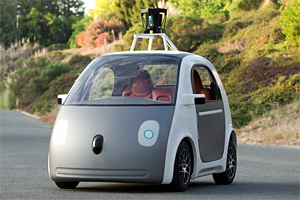
The internet is buzzing with news that Google is to build its own self-driving cars. So what exactly are they?
What is it?
Google has made a driverless car that will have no controls; just a ‘start’ button, and a big ’emergency stop’ button. It has two seats with seatbelts, space for your belongings, and a screen that shows your route.
Where can I buy one?
You can’t. Google is to make 100 prototypes, which its engineers will test in California over the next couple of years to “learn what it will really take to bring this technology into the world”. So they are a few years off yet.
Why is Google building driverless cars?
Officially, Google says its aim is “improving road safety and transforming mobility for millions of people”. But really, it just wants to make money.
It’s worth noting that Google invested $258m in Uber, the controversial cab service app, last year. Marry up a smartphone-operated cab system with cabs that drive themselves, and you could have a very lucrative business.
Will they be safe?
Speed will be capped at 25mph. The front of the car is made from “pedestrian-friendly” materials, and the car contains sensors that contain no blind spots and can “detect objects out to a distance of more than two football fields in all directions”. The car will have two sets of steering and braking systems, so if one fails for any reason, the other can take over.
Google’s current crop of self-driving hybrid Prius cars have already clocked up over 700,000 incident-free miles in America. (To be fair, there have been two incidents. One was when a human was at the controls, and the other was when the car was hit from behind.)
Although Google claims the cars will have no controls, the prototypes will initially have a steering wheel, accelerator and brakes to comply with safety laws in America.
Are there any other driverless cars?
Yes. A driverless car project is to be tested in Milton Keynes city centre next year, when 20 ‘pods’ will run on designated tracks. By 2017, 100 “fully autonomous” pods will be “running on pathways alongside people and will use sensors to avoid obstacles”, according to the Department for Business, Innovation & Skills.